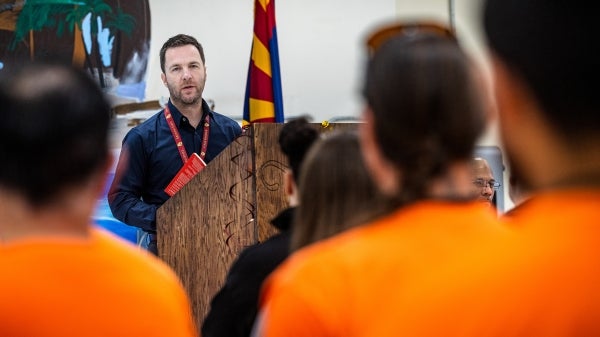ASU archaeologist appointed to NAGPRA federal advisory committee

Prior to becoming a research professor at ASU's School of Human Evolution and Social Change and founding director of the university’s Center for Digital Antiquity, Frank McManamon served as chief archaeologist of the National Park Service and in other positions deeply involved in developing guidance for public archaeology at the federal level.
Frank McManamon is an archaeologist who has devoted his career to guiding policy in a way that balances concerns about sensitive tribal cultural resources and the public benefits of historical and scientific scholarship and research.
In recognition of this work, he was recently appointed as a member of Native American Graves Protection and Repatriation Act's federal advisory committee.
Prior to becoming a research professor at Arizona State University's School of Human Evolution and Social Change and founding director of the university’s Center for Digital Antiquity, McManamon served as chief archaeologist of the National Park Service and in other positions deeply involved in developing guidance for public archaeology at the federal level.
These efforts included high-profile assignments such as providing technical assistance for the Kennewick Man case; advising on the New York City African Burial Ground project; and participating in a United States UNESCO delegation to address illegal artifact trafficking.
When the Native American Graves Protection and Repatriation Act became federal law in 1990, McManamon was working as departmental consulting archaeologist for the Department of the Interior. He and his office were assigned to implement the new law for the secretary of the Interior.
“This allowed me to be involved in several aspects of the new law’s implementation, including drafting regulations, creating and organizing the new NAGPRA Review Committee, and overseeing the first 18 meetings of the seven-person committee, from 1992 all the way to 2000,” he said.
The law itself established — among other directives — a more comprehensive federal monitoring system for identification and repatriation of any culturally unidentifiable Native American remains (and associated funerary or sacred objects), as well protection for Native American graves and cultural items from archaeological sites on federal and tribal lands.
The secretary of the Interior, who ultimately oversees NAGPRA, is supported by a committee that compiles the ongoing inventory of remains and items, recommends specific actions for their disposition, and helps resolve conflicts that can’t be settled locally.
The group members also submit an annual report to Congress on their progress and on any barriers they encountered in carrying out the law.
“The committee does not bind the federal government, but its view and recommendations will be a very important consideration for any action that the secretary must take,” McManamon said.
The law requires that committee members come from diverse backgrounds, he said, with the secretary choosing three from nominations submitted by Native American, Native Alaskan and Native Hawaiian groups and traditional religious leaders; three from nominations by national museum organizations and scientific organizations (of which McManamon is one); and one from a joint nomination by all other members.
Now, armed with additional insights from a distinguished career in academia and an accomplished record of preserving and sharing archaeological data at the helm of Digital Antiquity, McManamon is once again looking forward to “engaging in important NAGPRA policy matters, this time as a committee member.”
More Arts, humanities and education
Autism diagnosis leads ASU professor to write book about neurodiversity and literature
Bradley Irish always knew his mind worked differently.But it wasn’t until two years ago that Irish, an associate professor in…

ASU professor, Arizona inmate work to rehabilitate the 'imprisoned mind'
An Arizona State University professor has collaborated with an Arizona inmate on a book that examines why investing in healing…
Illuminating legacy at ASU
In 2020, the ASU Art Museum unveiled a groundbreaking installation, "Point Cloud (ASU)," by renowned artist Leo Villareal. The…